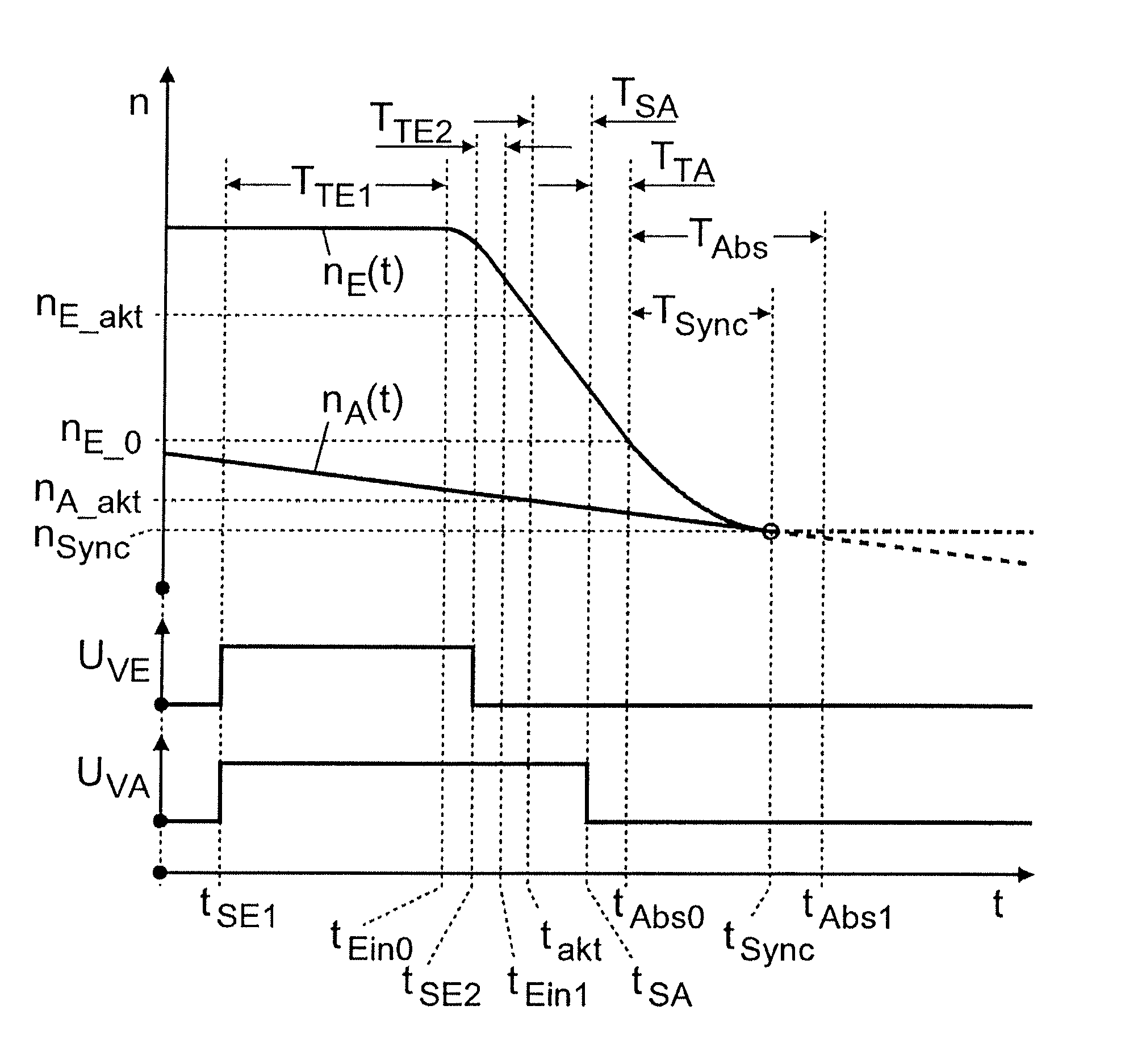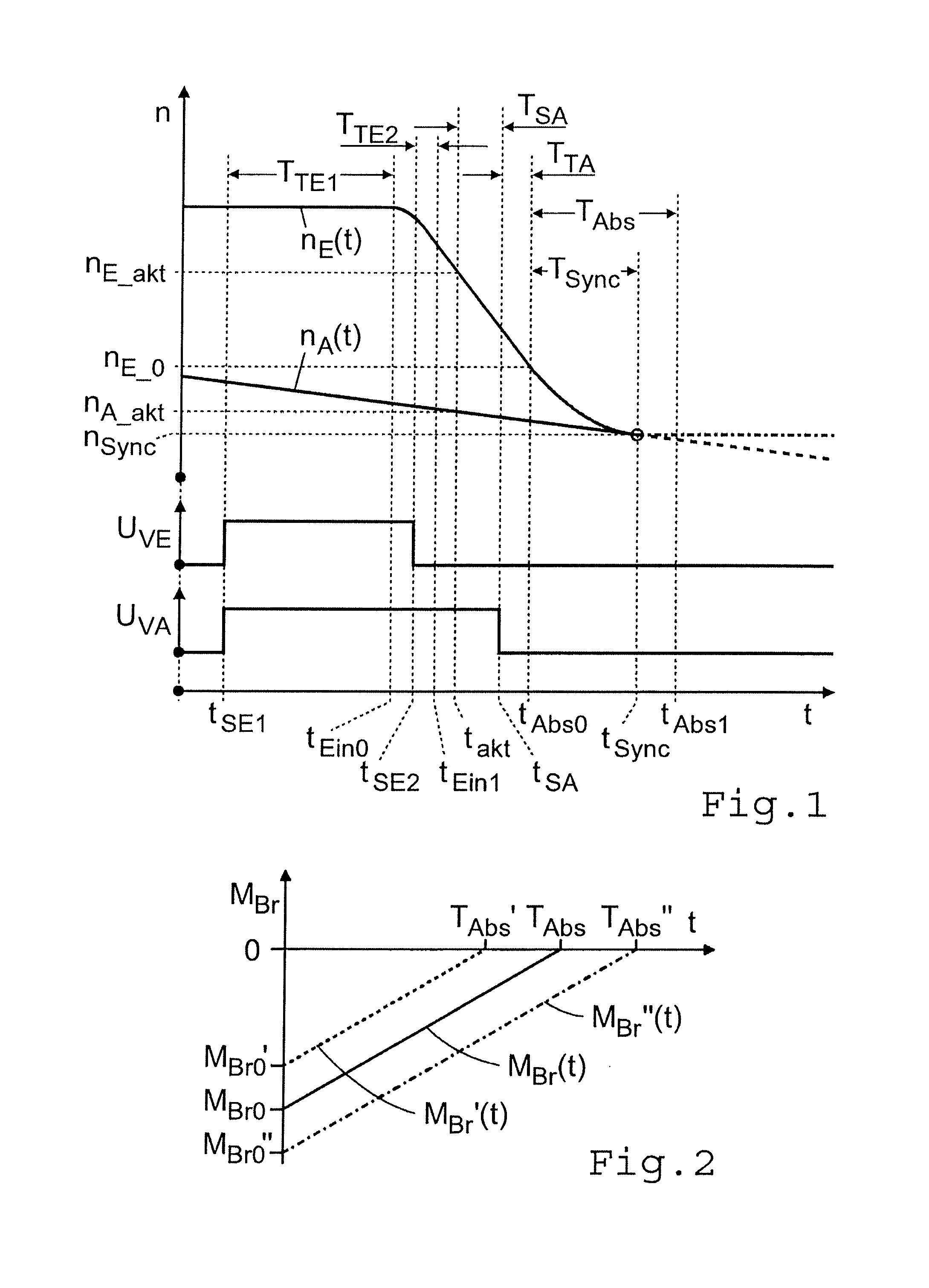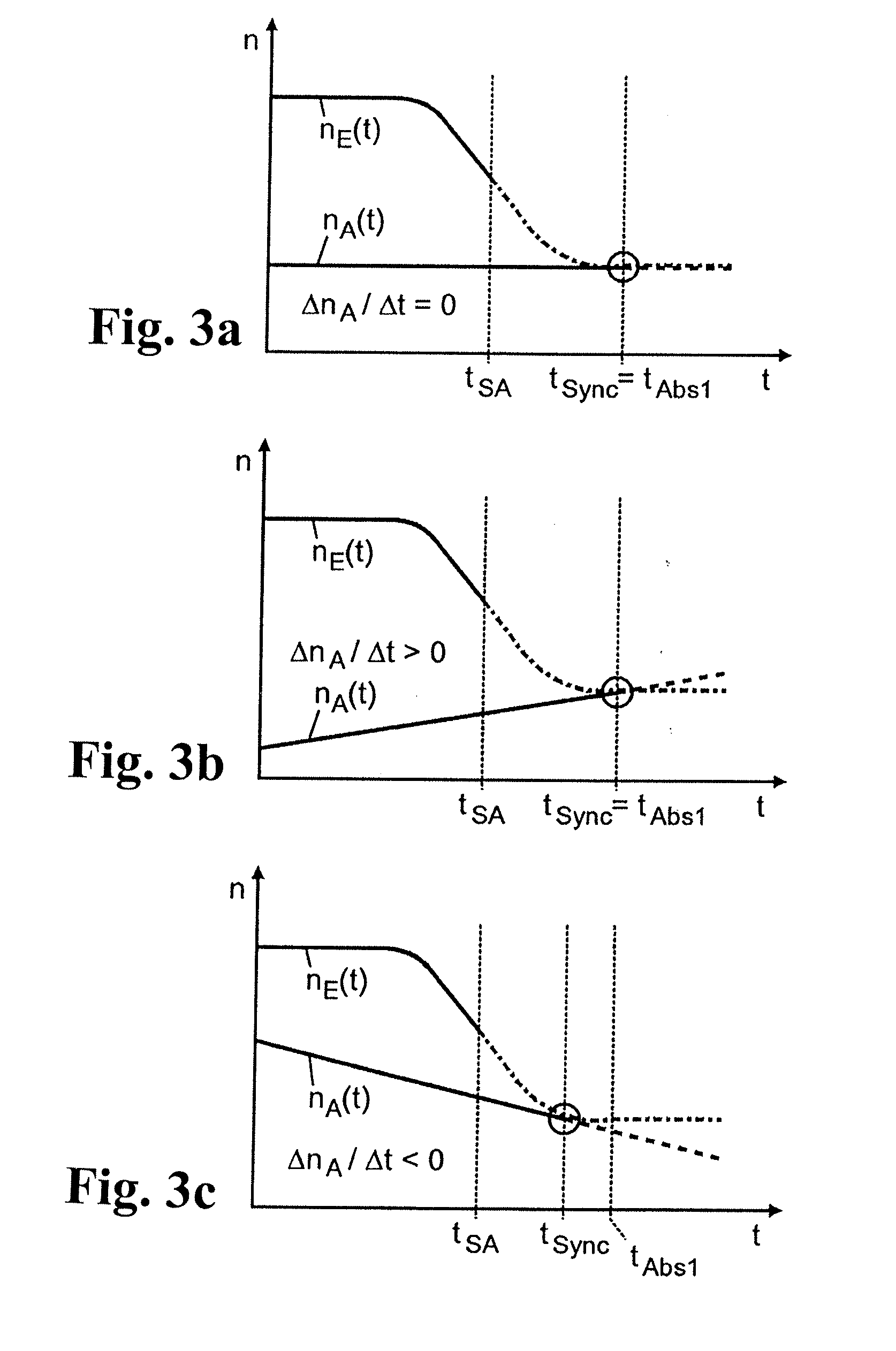Method for controlling a transmission brake
a transmission brake and brake technology, applied in the direction of instruments, mechanical equipment, gearing, etc., can solve the problems of certain inaccuracy of methods, and achieve the effect of further improving the upshifting quality of transmissions
- Summary
- Abstract
- Description
- Claims
- Application Information
AI Technical Summary
Benefits of technology
Problems solved by technology
Method used
Image
Examples
Embodiment Construction
[0040]FIG. 4 shows a typical transmission brake 1 in an automated transmission of countershaft design provided with claw clutches, with which the control method according to the invention can be used. The transmission brake is in the form of a hydraulically or pneumatically actuated disk brake and is in this case arranged at the engine-side end of a countershaft 2 of the transmission (which is not illustrated further). The inner and outer disks 3, 4 of the transmission brake 1 are connected in a rotationally fixed manner by way of inner and outer carrier teeth, in alternation to the countershaft 2 and to a brake housing 6 mounted on an end wall 5 of the transmission housing on the engine side. The transmission brake 1 is actuated by a piston 8 fitted to move axially in a brake cylinder 7, which is acted upon on the outside by the controllable control pressure in the pressure space 9 of the brake cylinder 7 and thereby pressed against the disks 3, 4 in opposition to the restoring for...
PUM
 Login to View More
Login to View More Abstract
Description
Claims
Application Information
 Login to View More
Login to View More - R&D
- Intellectual Property
- Life Sciences
- Materials
- Tech Scout
- Unparalleled Data Quality
- Higher Quality Content
- 60% Fewer Hallucinations
Browse by: Latest US Patents, China's latest patents, Technical Efficacy Thesaurus, Application Domain, Technology Topic, Popular Technical Reports.
© 2025 PatSnap. All rights reserved.Legal|Privacy policy|Modern Slavery Act Transparency Statement|Sitemap|About US| Contact US: help@patsnap.com



